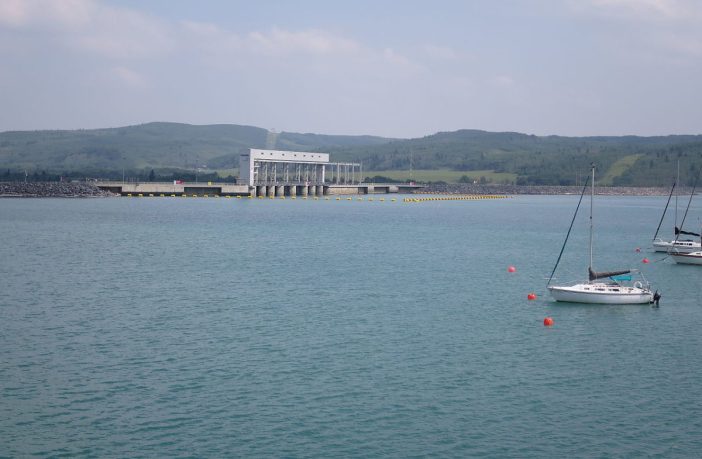- Canada-based power provider TransAlta Corporation recently submitted an approval request to the Alberta Utilities Commission (AUC) for its WaterCharger battery storage project, which would connect 180 MW of battery storage capacity to its 51 MW Ghost Hydroelectric Dam located at the confluence of the Bow and Ghost Rivers, in the Canadian province of Alberta.
In December, TransAlta had published an environmental evaluation, an environmental protection plan, and a noise impact assessment on the project, and the three documents were now added to the approval proceedings. The reports are intended to bring clarity to issues such as the risk of battery fires, the risk of leaching or leaking from the batteries, noise concerns, and the environmental impact of the construction of power lines.
“Our initial assessment indicates that no additional power lines are needed and the connection for the facility would be limited to modifications within the existing substation,” the company said in a recent statement to its stakeholders. “However, given TransAlta is not a transmission facility owner in this area, we are currently working with the Alberta Electric System Operator (AESO) to identify, study, and verify feasible transmission voltage connection options to connect WaterCharger to the Alberta Interconnected Electric System at, or adjacent to, the Ghost substation.”
In the environmental evaluation, the company specified it wants to use lithium-ion batteries and that a battery sub-chemistry of lithium-iron phosphate (LFP) is currently being considered. ” The project will consider various technical factors when selecting the final battery vendor, including safety, life span, performance, and cost,” the document reads. “The size and number of modular battery units is expected to vary by vendor, with the project expecting up to 220 units to be installed. The final layout and number of battery units will be confirmed once the battery manufacturer is selected.”
The storage system will include bi-directional inverters, protection equipment, direct current (DC) and alternating current (AC) circuit breakers, waveform filter equipment, equipment terminals, and a connection cabling system. The modular battery units are each expected to measure 7 x 2 x 2 m and to embed a heating, ventilation, and air conditioning (HVAC) system.
TransAlta plans to start construction on the storage facility in March 2023 and to complete it within nine months. The batteries will be remotely operated by TransAlta’s Hydro Control Centre located in Calgary, approximately 50 km east of the hydropower dam, over their 25-year lifecycle.
Author: Emiliano Bellini
This article was originally published in pv magazine and is republished with permission.











